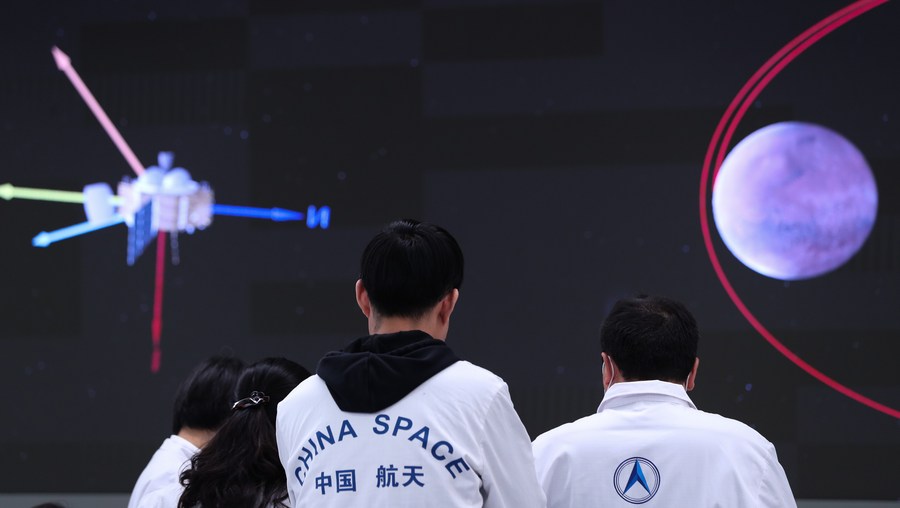Interview: Space cooperation creates bridges between Europe, China, says ESA expert

File photo released on March 4, 2021 by the China National Space Administration (CNSA) shows a high-resolution image of Mars captured by the country's Tianwen-1 probe. (CNSA/Handout via Xinhua)
"The data that Zhurong (China's first Mars rover) will bring back to China would be of great interest to the scientific communities, be it in Europe, in China or anywhere," said an expert of the European Space Agency.
PARIS, May 19 (Xinhua) -- Europe-China cooperation in outer space is of great importance and creates bridges between scientists of the two sides, a senior official and expert of the European Space Agency (ESA) has said, expecting more cooperation and exchanges in this field.
In an interview with Xinhua on Monday, Karl Bergquist, ESA's administrator of international relations, said the agency, which has been cooperating with Chinese scientists in space exploration over the past years, is closely following the development of China's Mars mission.
The Tianwen-1 probe carrying China's first Mars rover Zhurong, named after the god of fire in ancient Chinese mythology, successfully touched down on the Red Planet on Saturday morning. It is the first time China has landed a probe on a planet other than Earth.

Technical personnel work at the Beijing Aerospace Control Center in Beijing, capital of China, May 15, 2021. (Xinhua/Jin Liwang)
Bergquist called the landing "a fantastic achievement" because landing on Mars is a highly complex and difficult task and what China has done is something which has never been done before -- succeeding to land in the first attempt.
"We really would like to congratulate China on this great achievement," he said.
"The data that Zhurong will bring back to China would be of great interest to the scientific communities, be it in Europe, in China or anywhere," the ESA expert added.
The expert said the European agency had provided environmental data on Mars to the China National Space Administration in 2015. It has also offered telemetric and tracking support for the Mars exploration mission.
As to a future Mars mission, a sample return one, Bergquist believed it will come in several years because of its enormous complexity. He is looking forward to more cooperation between European and Chinese scientists in this domain.

Technical personnel celebrate at the Beijing Aerospace Control Center in Beijing, capital of China, May 15, 2021. (Xinhua/Rao Aimin)
For decades, European and Chinese space scientists have been working together in various domains, the expert said, citing the Solar wind Magnetosphere Ionosphere Link Explorer, or SMILE, a joint mission between the ESA and the Chinese Academy of Sciences which aims to build a more complete understanding of the Sun-Earth connection by measuring the solar wind and its dynamic interaction with the magnetosphere.
"This is a very interesting mission. The purpose of such a mission is providing data to European and to Chinese researchers so that they can work together to understand and learn more about the universe," he said.
Bergquist also highlighted Europe-China cooperation in the field of earth sciences, introducing the "dragon" project that has been going on for over 10 years with about 700 scientists from the two sides working together on issues including oceans, atmosphere, chemistry, pollution and climate.
"These are really fields that we have global problems (with) and we try to see how we can work together to find a solution for us all," Bergquist said.
"This is fantastic. We are pushing science a little bit further each time through these cooperation projects," he added.
Photos
Related Stories
- China city launches new China-Europe freight-train service
- New China-Europe freight train service launched
- Chinese foreign ministry refutes U.S., European media hyping up population crisis
- Xinjiang's Alataw Pass sees robust rise in China-Europe freight train trips
- Interview: China-Europe freight train advantageous, promising, says Finnish minister
Copyright © 2021 People's Daily Online. All Rights Reserved.










